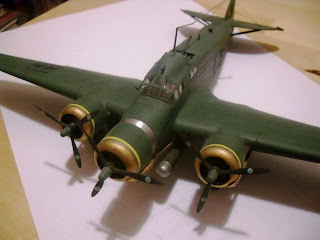A rambling post; well, even more rambling than usual. If I were a Jacobean, or a late Elizabethan, I might take the strange weather as a sign of things being wrong 'in the state of Denmark' (although they don't have the Euro!), or, indeed, closer to home. Today's work involved another trip to the Great Wen, or, as I increasingly think of it, Londinium. That city stills stands as an embodiment of huge supra-national forces - just as it did (though of a far more Provincial nature) under Rome, and it probably has as much in common with its hinterland - now, England, then, Britannia - as ever. So, I always come to it as a rustic, of sorts. But, today was a pleasant visit. I had time to take a coffee in Marylebone, and, savour, as always, its particular railway architecture, while enjoying the 18th Century undertow of drinking coffee in London. I was early, too, for my meeting in the Strand, so had time to wander in the rain under the plane trees, past Lincoln's Inn (home of many a high Victorian amateur adventurer and sleuth; in fiction, at least), the Old Bailey (always looking like a more ominous Balliol, Oxford), then into Fleet Street. The heavy rain running in the gutters was a reminder that the River Fleet still lies somewhere underneath, buried in culverts. Perhaps one day it will run above ground again, in a more optimistic version of Jefferies'
After London. In the near distance was the Gherkin, but shrouded in low clouds, as if a Blake-like God was warning of further financial disaster to come. The meeting was a meeting, but afterwards I had time to have my haircut, by a pleasant, but remarkably nervous, razor wielding North African, in Marylebone Station. It is a gentleman's barbers, in which the barber does not bother the customer with his views on football, rugby, golf, or anything else, and, as such, recommended.
Although it rained today, yesterday saw a day of sunshine, enough to enable some work on my sad allotment plot to take place, and enough to encourage a cactus that I have had for about 12 years to finally flower:
This fellow has squatted in his pot for a dozen years, slowly, slowly growing, and, now - a crown! There is a link with toy soldiers and models here - patience. The sun also shone on my hedge-in-being. Two years ago I was, due to new neighbours, in a position to grub up an old, very woody, very wide, 12 foot high privet hedge. In its place, I am growing an apple, rose, and holly hedge, interlaced with all sorts of flowers. At the moment, poppies reign:
My grandfather, who, amazingly, survived the Great War on the Western Front as an infantryman (in The King's, the old 8th Foot - bold defenders of Canada in 1775 and 1812, among many other things), said of our use of Poppies as the flower of remembrance, 'Poppies. I never saw poppies, just bloody mud'.
I am an amateur enthusiast for the late 18th Century in the West, as, I know, are many old school wargamers. One of the things that attracts me to our ancestors then is the sense that they are becoming like us, that the early modern period was fading, and that the Middle Ages was almost gone. Late last week, my wife and I went to
Compton Verney, a jewel in Warwickshire's richly endowed cultural crown. Not only are the house itself, and its restored landscaped grounds works of art, but it is the site of an increasingly important art gallery. The current exhibitions are of English impressionists and the landscape paintings of Thomas Gainsborough. And here he is, aged around 28 in 1755; a self-portrait in pencil:

Gainsborough, of course, is best known for his society portraits, which I am not a particular fan of. So, I was pleased to find that neither was he! Instead, he longed to find 'a sweet, small village' where he could 'live out the fag end of my life'. As I said, they became like us in this period.
Finally, a shameless bit of self-advertisement: I am the guest speaker on BBC Radio 4's Making History programme which is broadcast tomorrow, Tuesday, 12th June at 3:00pm, later to be available on i-player (I will add a link on the right - if it sounds ok!).


















































